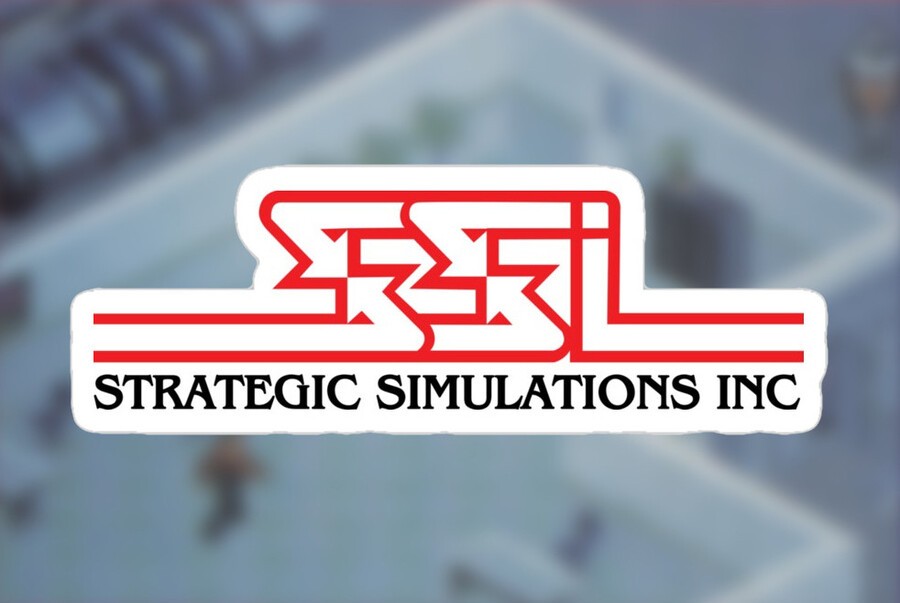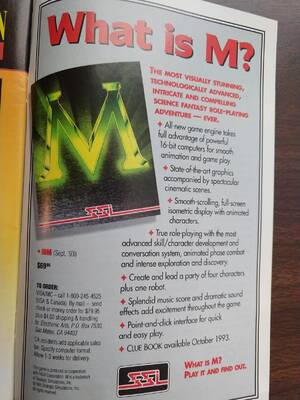
SSI (Strategic Simulations Incorporated) was a company originally founded by Joel Billings in 1979 to focus only on strategic wargames. Its history would change dramatically by the end of the '80s, when it managed to acquire the rights to the much sought-after Dungeons & Dragons license.
Soon, 'Goldbox' was born: a 2D engine dedicated to the development of D&D-flavoured RPGs. Powering classics like Pool of Radiance or Death Knights of Krynn, Goldbox featured a small first-person view, an isometric view for battles and a limited text display, so that the player would refer to a log book to read what happened during certain events. The engine was created to suit the needs of the multiplatform landscape of late-'80s gaming, as it could be easily scaled down to port games on less powerful computers, like the Commodore 64. In 1989, it was the best that computer RPGs could offer.
Two years later, the release of SSI’s first-ever sci-fi RPG, Buck Rogers: Countdown to Doomsday, signalled a big shift in the company, as several new writers (like Rhonda Van and Ken Eklund) were employed. By the following year – when Matrix Cubed, the sequel to Countdown, was released – the Goldbox engine was already three years old and was failing at competing with RPGs that were becoming ever more complex.

Considering how the most popular RPGs in 1992 were Ultima VI and Eye of the Beholder – and in 1993, Ultima Underworld would be released – technology was moving fast, and SSI seemed to be struggling to keep up. 'Project M' was therefore started in early 1992, a new title that could also provide the company with an engine that could better fit the needs of a changing market.
The team working on the project was mostly kept fluid, with many coming and going. Among them, following the project since its early days, were designer and producer Dave Shelley and writer Rhonda Van, both of whom had worked on such games as the mentioned Countdown to Doomsday and Curse of the Azure Bonds. Other writers, like Ken Eklund, worked on Project M only for a limited time.
The story of the game would have taken place on the planet Monsoon, covered by a cloud of noxious gas, where the player would lead an undercover team of four characters (plus one robot) called the Midnight Raiders, trying to save kidnapped diplomats from the evil Terran Overlord Government. In some of the previews, the game is mentioned as Midnight Sons, but that doesn’t seem to have been the official title. In the magazines, the game was previewed with a possible release date of September 1992, which came and went without much news.
David Shelley remembers that Project M started life as a big sci-fi RPG project for the company, originally planned for both Amiga and MS-DOS. An all-new 256-colour VGA engine was going to keep the classic isometric view but would now feature cinematic cutscenes and 3D animated characters. Ken Eklund remembers the writers were developing a story with a “kind of a cyberpunk atmosphere, really urban-gritty vibe".
Shelley mentions how the work on M was kept parallel to the other RPGs that SSI was working on at the time, Dark Sun: Shattered Lands and Pools of Darkness. “While Dark Sun would continue the standard grid-based design, M was supposed to be fully isometric. Rhonda (Van) worked hard to get it done and secure resources for the project. She and I fought quite a bit to champion our product, working with a producer, Todd Mitchell Porter, who was also busy with Dark Sun. The teams were fluid, with artists, writers and engineers being pulled back and forth.”

With several projects being developed at the same time, the teams were being stretched thin in order to try and complete them in the nine months that, as Shelley mentions, the company would usually allot for games. But with M, he continues, the task was proving to be impossible. “Management was used to the 9-month dev cycle of the Goldbox products; right from the beginning, I told them that developing a new engine for M would take at least eighteen months (and I was correct in the end), but they did not seem to listen. One day I confronted them about it, so they brought in one of the senior engineers, who told them, 'If everything went right, we could make the game in 9 months.' They dismissed my concerns because their planned budgets required the fictitious date,” Shelley says.
Overall, the people who worked on M remember how the project seemed to be locked in a seemingly endless fight for resources in the company. Shelley also adds, “making matters more complicated, management created a tools division, which would make all our dev tools. Fine in concept, but they put a perfectionist in charge. We couldn't get tools until that department was sure they had every bell and whistle. They refused to concern themselves with the development schedules of either project.“
After several months of work, with the team at one point reaching almost thirty people, Project M was cancelled as it was still in the early stage of development, compared to Dark Sun. Shelley mentions that almost thirty people who worked on it – especially from the R&D department – were laid off, while the external producers were put in charge of Dark Sun. Ken Humphrey, a producer at SSI at the time, says, “we sunk so much money and time onto Project M that, by the time it was cancelled, it felt like a shockwave had hit the company. We should have put all that effort into Dark Sun, and this wrong decision ended up costing many jobs at the company. I think that the failure of Project M and the layoffs that followed changed the face of SSI for good; it never recovered after that.”
Dark Sun: Shattered Lands was released almost a year after it was originally planned, in 1993. The poor sales of the game, plus the cancellation of Project M and losing the exclusivity of the D&D license, signalled the end of the glory days of SSI as an independent company. In 1994, the company was bought by Mindscape and would continue mainly publishing games developed by other studios. Finally, after going through various changes, several years later, in 2001, SSI became part of Ubisoft. The French company would retire the name and the brand soon after that; how different things could have been had Project M had the support it needed.
